10 of the best perennials to plant in fall – for sensational summer flowers year-after-year
Fall is an ideal season to add perennial plants to borders and flower beds, and begin planning your yard for future years


Perennials are wise and wonderful additions to any garden space as they can reliably flower for months each and every year. These plants come in a huge variety of shapes, sizes, textures, and colors, with many offering attractive foliage, too.
Many of the best perennials you can choose to add to your backyard ideas are suited for planting in fall, from late September through October. The soil tends to be warm and moist at this time of year, when the baking heat of summer is behind us and there is time for plants to establish a good set of roots before the cold of winter arrives.
Plants are readily available to purchase in fall from garden centers, stores, and online, and perennial plants come either bare root or in containers. They will need to be spaced adequately - according to their label - and kept moist after planting to help them establish, but take care to ensure they do not sit in waterlogged soil.
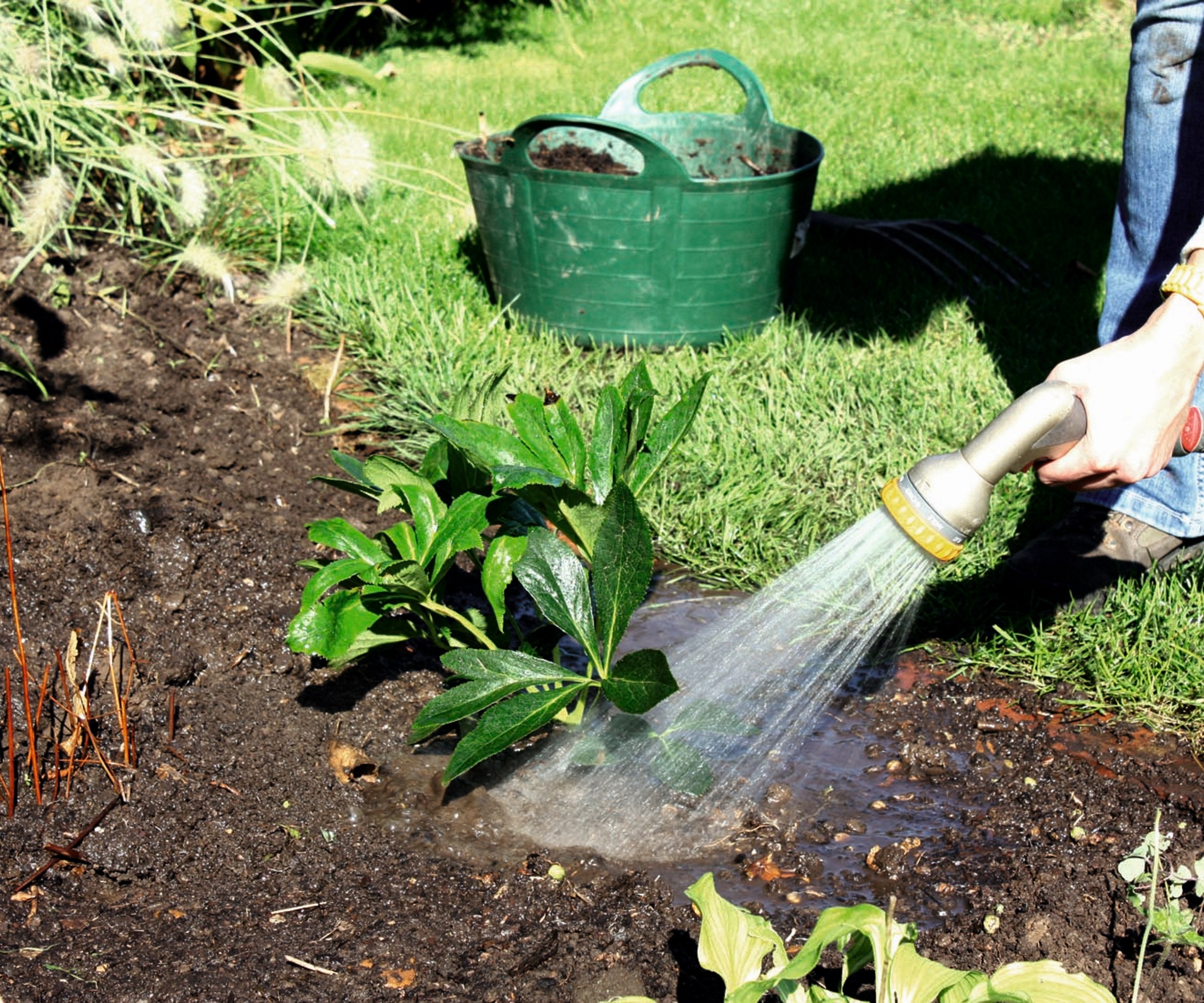
Water perennial plants in well after planting
8 of the best perennials to add to your garden in fall
Perennials are plants that regrow every year and there is an exhaustive list of these that you can include as part of any backyard landscaping. We take a look at 8 great perennials that you can plant in fall to bring beauty and interest to your garden for years to come.
1. Heuchera
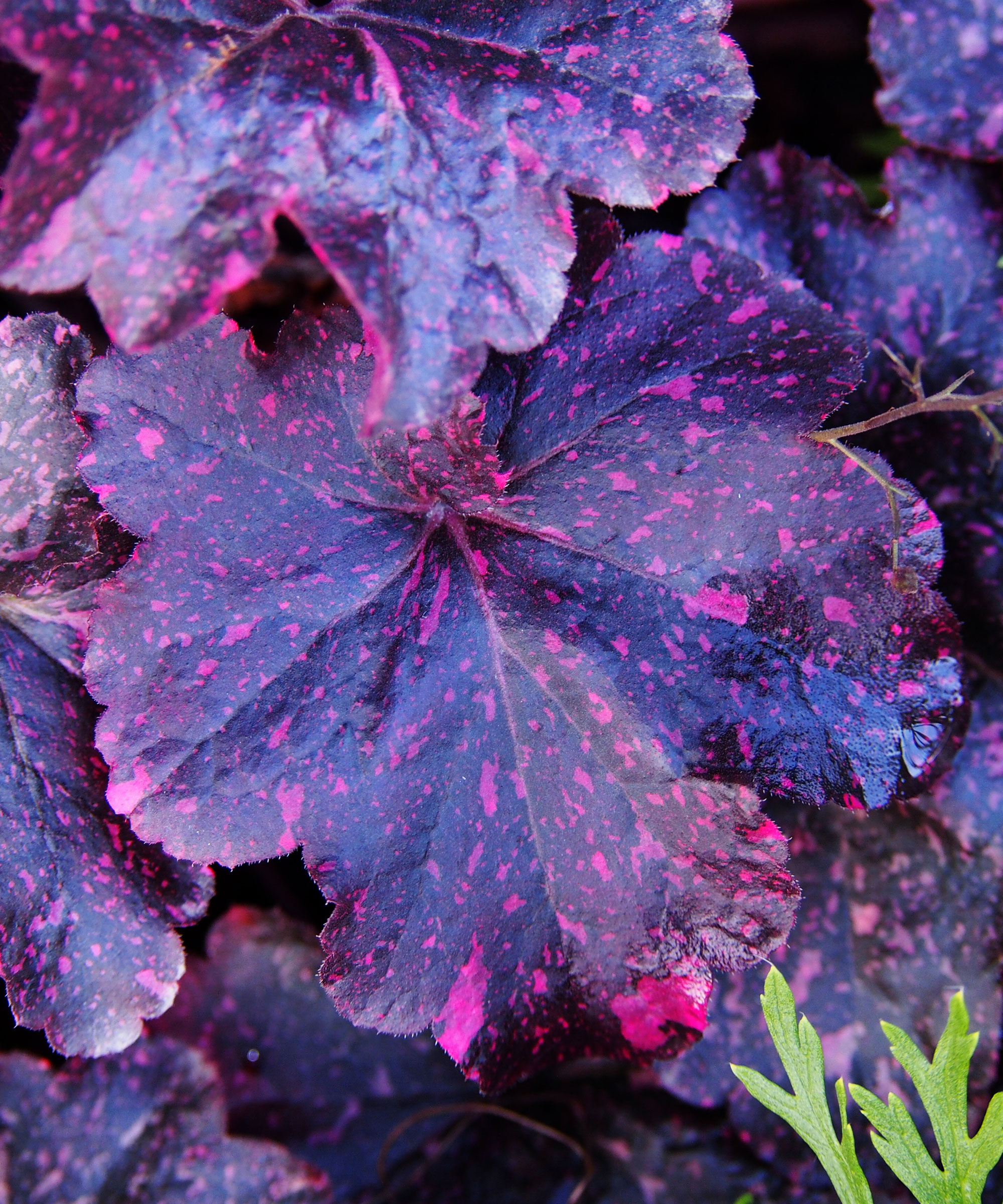
Heuchera provide splashes of color to a space
- Aspect: Part shade
- Suitable for: Borders, containers, living walls
- Flowering time: Spring and summer
Heuchera are also commonly known by names including coral bells and coral roots. There are many heuchera varieties that come in a plethora of colors, shapes, and patterns. Heuchera are predominantly grown for their stunning and unique foliage, but do also put out glorious tiny and delicate flowers that are bell-shaped and bloom from spring through summer.
If you want to grow heuchera, plants can be commonly sourced from nurseries and should be planted in early fall to put out their roots before the winter arrives. Plants want to be in rich, but well-draining soil. They are great shade plants that do like to be in a dappled shaded spot. As evergreen plants, they are also fantastic as plants for pots all year round.
One of our favorite selections is Heuchera 'Berry Smoothie' available at Nature Hills. It features 5-inch long rose-pink leaves that retain their vivid colors for many months.
Design expertise in your inbox – from inspiring decorating ideas and beautiful celebrity homes to practical gardening advice and shopping round-ups.
2. Russian sage
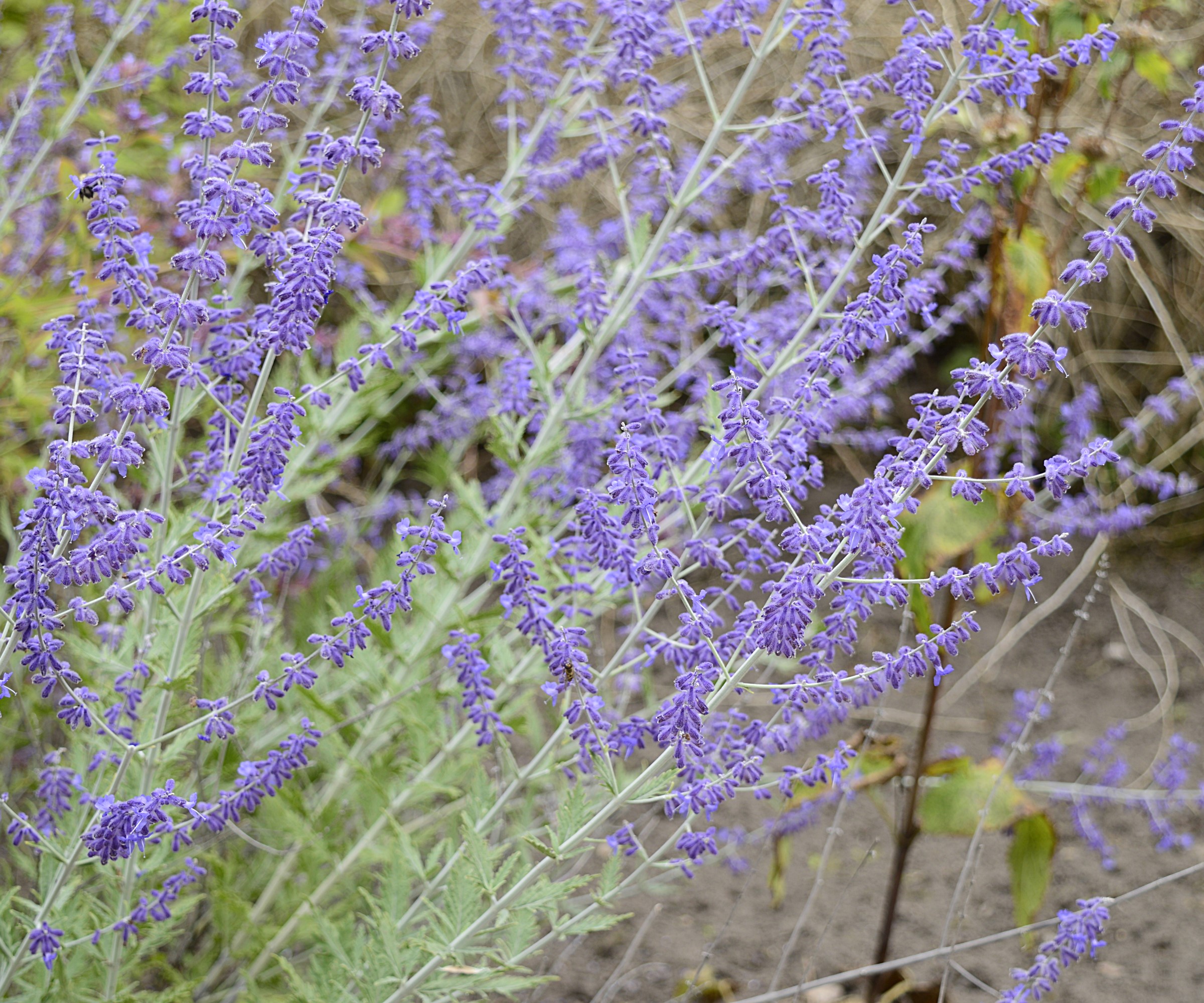
The flower spikes of Russian sage are loved by bees
- Aspect: Full sun
- Suitable for: Borders, dry gardens, rock gardens
- Flowering time: Late summer
Russian sage is a very low-maintenance perennial, perfect for drought tolerant planting ideas, or if you are wanting to add a bit of Mediterranean garden inspiration to a space. The plant is hardy in US hardiness zones 5-10 and fits perfectly in either borders or dry gardens.
Russian sage produces lavender-like purple blooms on branching spikes, with the flowers attracting bees and other pollinators when blooming in late summer and early fall. As well as the blooms, it has fragrant silver foliage.
Russian sage can be planted in spring or fall. It wants to be in well-drained soil and ideally in full sun. It can grow up to five feet high and three feet wide and requires little annual maintenance once established. It does benefit from an annual pruning to keep the plant compact. You can cut back Russian sage in either spring or fall.
Shop the range of Russian Sage at Fast Growing Trees
3. Hellebore
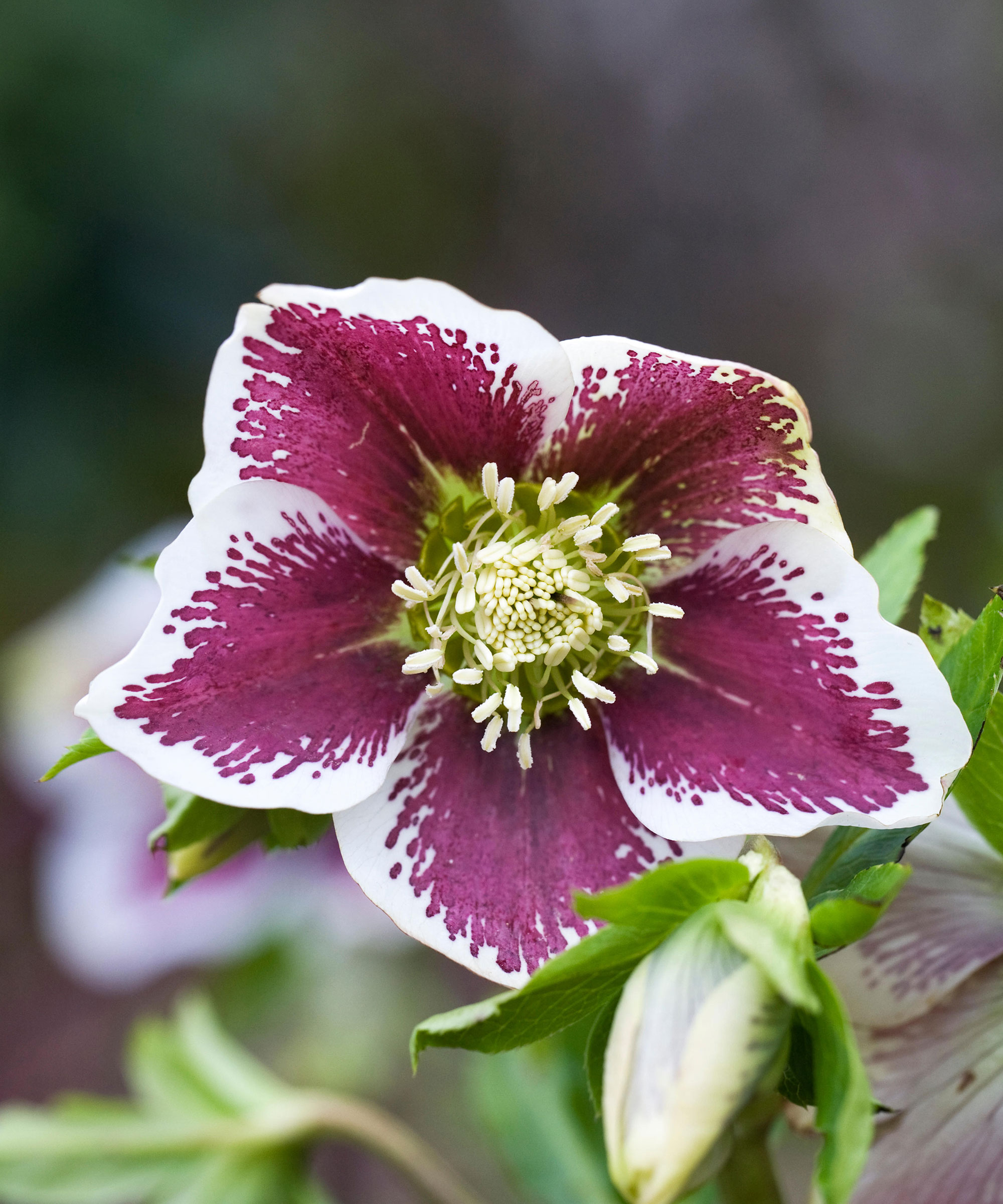
Hellebores are a great early food source for pollinators
- Aspect: Part-shade
- Suitable for: Shady spots, woodlands, borders
- Flowering time: Winter to spring
Hellebores are hardy perennials that are one of the first blooms seen each year, with their flowers coming out in winter and early spring. There are lots of hellebore varieties available if you want to grow hellebores, coming in a wide array of colors. Hellebores are woodland plants that are mostly evergreen and fantastic additions for a pop of color in a winter garden.
They can be planted from fall through to spring, anytime providing the soil is not frozen. The best location for hellebores is in dappled or partial shade and rich fertile soil. They want lots more sunlight in winter than in summer, so they often work well under other trees or shrubs. Once hellebores are planted and established, they do not respond well to being moved.
Hellebores can be happy in pots as part of a container garden and, wherever they are planted, they benefit from an annual mulching.
4. Phlox

Phlox flower in abundance each summer
- Aspect: Full to part sun
- Suitable for: Borders, containers, cut flowers
- Flowering time: Spring through summer
Phlox can come in any color you can imagine, with over 60 different species in the phlox family. Many of these are annual plants, but there are lots of popular perennial phloxes to choose from. They are popular cottage garden plants and highly reliable bloomers. Phlox have a long flowering season, with early varieties flowering in spring and later types blooming until the frosts arrive.
Phlox are hardy in zones 3-8 and hugely popular with bees and other pollinators. These low-maintenance perennials want to grow in full sun and moist soil, but do not require lots of work. You need to deadhead phlox to extend the flowering and then cut back phlox come the end of the season. The time to plant phlox is in fall, where it can establish fast in the warm and moist fall soil. But it does want to be planted at least a month before the first frosts.
Phlox can come in very bright colors, for example the Scarlet Flame Phlox available at Nature Hills has vibrant red flowers that we think will really stand out from the crowd in any garden.
5. Bleeding heart
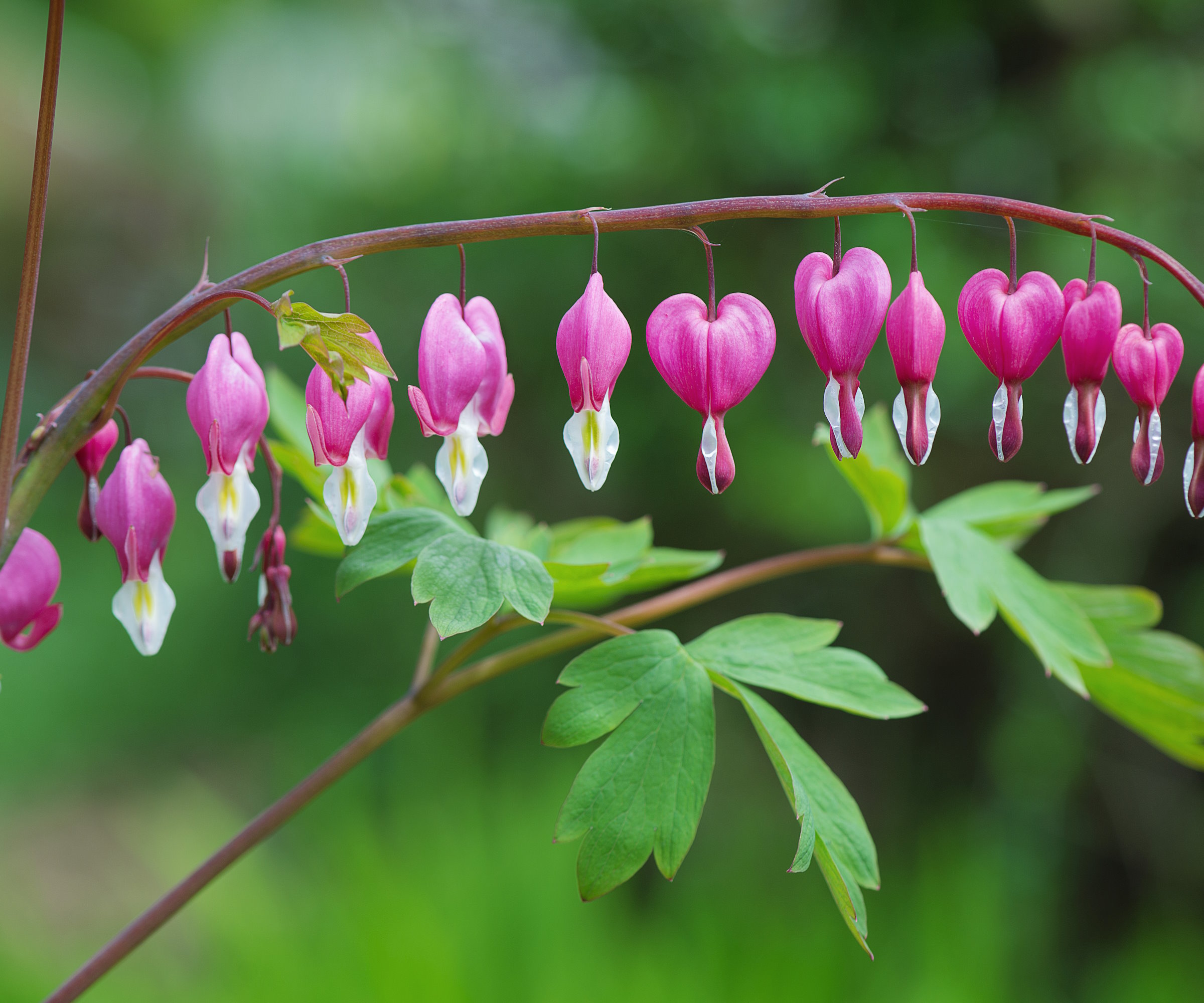
Bleeding heart are named for their distinctively-shaped blooms
- Aspect: Part shade
- Suitable for: Borders, woodland, shady spots
- Flowering time: Spring
The bleeding heart plant was known for a long-time as Dicentra but now goes by the name of Lamprocapnos. The name bleeding heart comes from its distinctive heart-shaped flowers, which bloom on arching stems each spring. Different varieties of the plant, which can reach up to three feet in height, can have red, pink or white blooms.
They are woodland plants that like shady spots, having historically been seen throughout forests and woodlands. They do like moist but well-draining soil and protection from strong winds - as the flower stems are very delicate and can easily break.
Bleeding hearts are best planted in the milder temperatures of fall, giving them enough time to get established before winter arrives. They are fairly drought tolerant plants that do benefit from a mulching of leaf mold each spring. There is no need to cut back bleeding hearts each year until the stems have died in winter.
6. Butterfly bush

Butterfly bushes have heavily-fragrant blooms
- Aspect: Full sun
- Suitable for: Borders, containers
- Flowering time: Late summer onwards
Butterfly bush, also commonly called buddleia, are hugely popular fast-growing perennial shrubs that provide great color from late summer onwards and can attract lots of butterflies and other pollinators into a garden space. Modern hybrids of butterfly bush means there are now options for any backyard ideas, including dwarf varieties that can be shrubs for containers.
These easy-to-grow plants are fairly unfussy about where they grow, but they will thrive best in a sunny spot in well-draining soil. Butterfly bushes can be planted at any time of the year, but the fall is an excellent time as the soil is warm and moist so the shrub can establish quickly without the need for lots of watering.
You will need to prune buddleia regularly to keep it under control, and deadheading butterfly bushes, while not an essential task, can help to encourage more blooms.
If you are looking for a standout smaller variety, the Pugster Pink butterfly bush available at Fast Growing Trees is a compact form but still puts on a fantastic display of full-size pink blooms.
7. Stachys

Stachys forms a mat of fuzzy leaves
- Aspect: Full sun to partial shade
- Suitable for: Rock gardens, borders
- Flowering time: Summer
Stachys is a perennial loved for its unique soft and grey evergreen foliage, with the leaves covered in fine hairs, and the spikes of flowers it puts out in summer. The plant is commonly referred to as lamb's ear. It is a drought-tolerant ground cover plant once established and ideal for planting in dry or rock gardens, or for use as part of xeriscaping ideas.
Stachys wants to be planted in full sun and in well-draining soil. It is very low maintenance, for example you only need to water plants during very dry periods. The plant does need cutting back to ground level in fall or spring and, during the summer, you can promote a second flush of flowers by deadheading.
Shop the range of lamb's ear at Nature Hills
8. Hostas
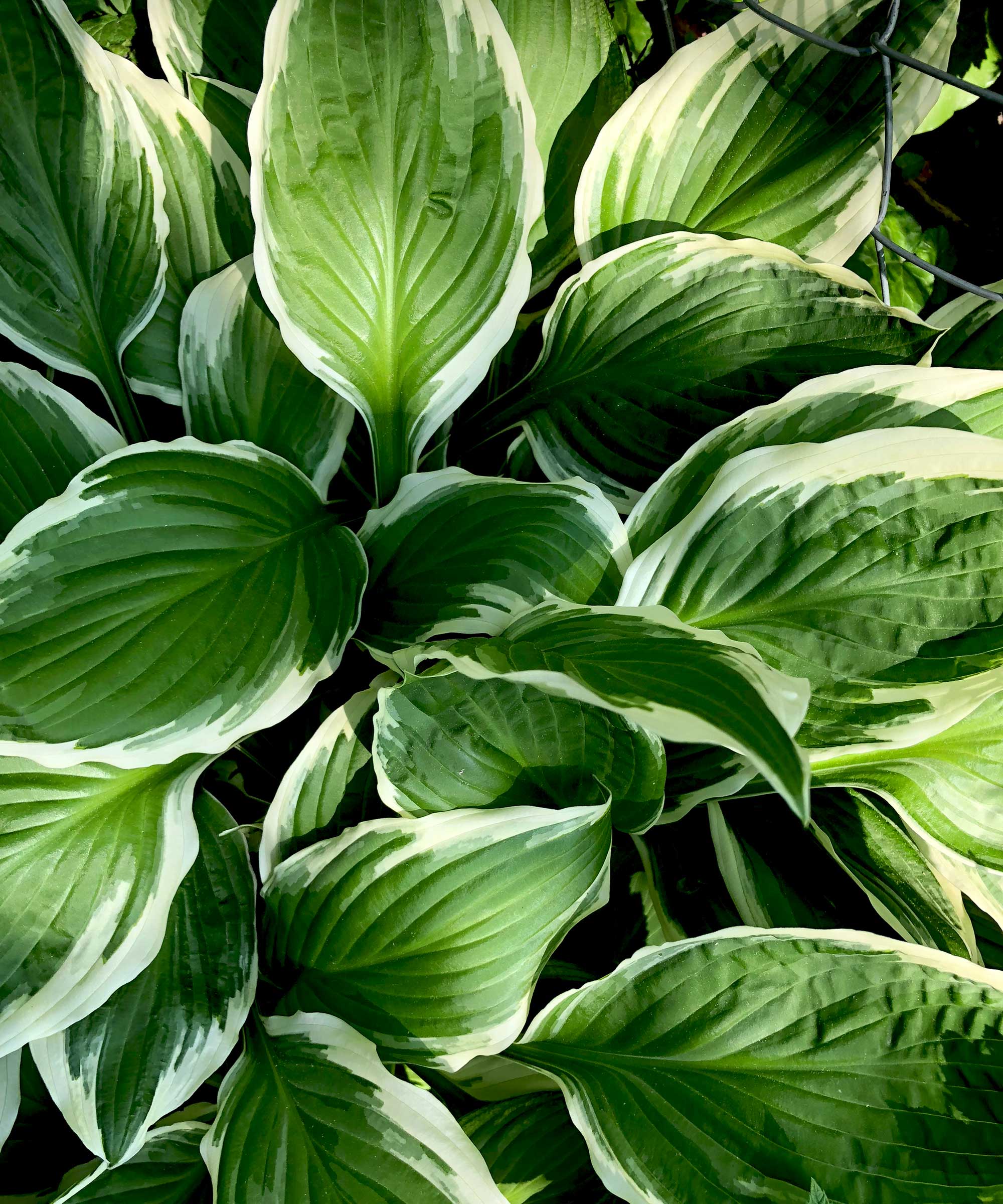
Hostas are fantastic foliage plants
- Aspect: Full to partial shade
- Suitable for: Borders, shady spots
- Flowering time: Summer
Planting hostas in fall a great option once past the heat of summer. Just make sure that the plants are in at least a month before the frosts arrive.
These hugely popular perennial foliage plants come in a range of sizes, colors, and textures - there is definitely a hosta to grow in any style or size of garden. The perennials are grown mainly for their distinctive foliage, but do also have flowers that appear on long stalks and often in shades of white or pink.
These are plants that like moist soil types and are happiest in partial to full shade spots. They can be grown in containers, but will require extra watering than being grown in the ground. Hostas are notoriously susceptible to damage from slugs and snails, so looking into slug control methods is recommended.
One of our top choices for a striking variety is Hosta 'Patriot', available at Perfect Plants, that has deep green leaves with eccentric white margins and tall pink flower spikes in summer.
9. Shasta Daisies
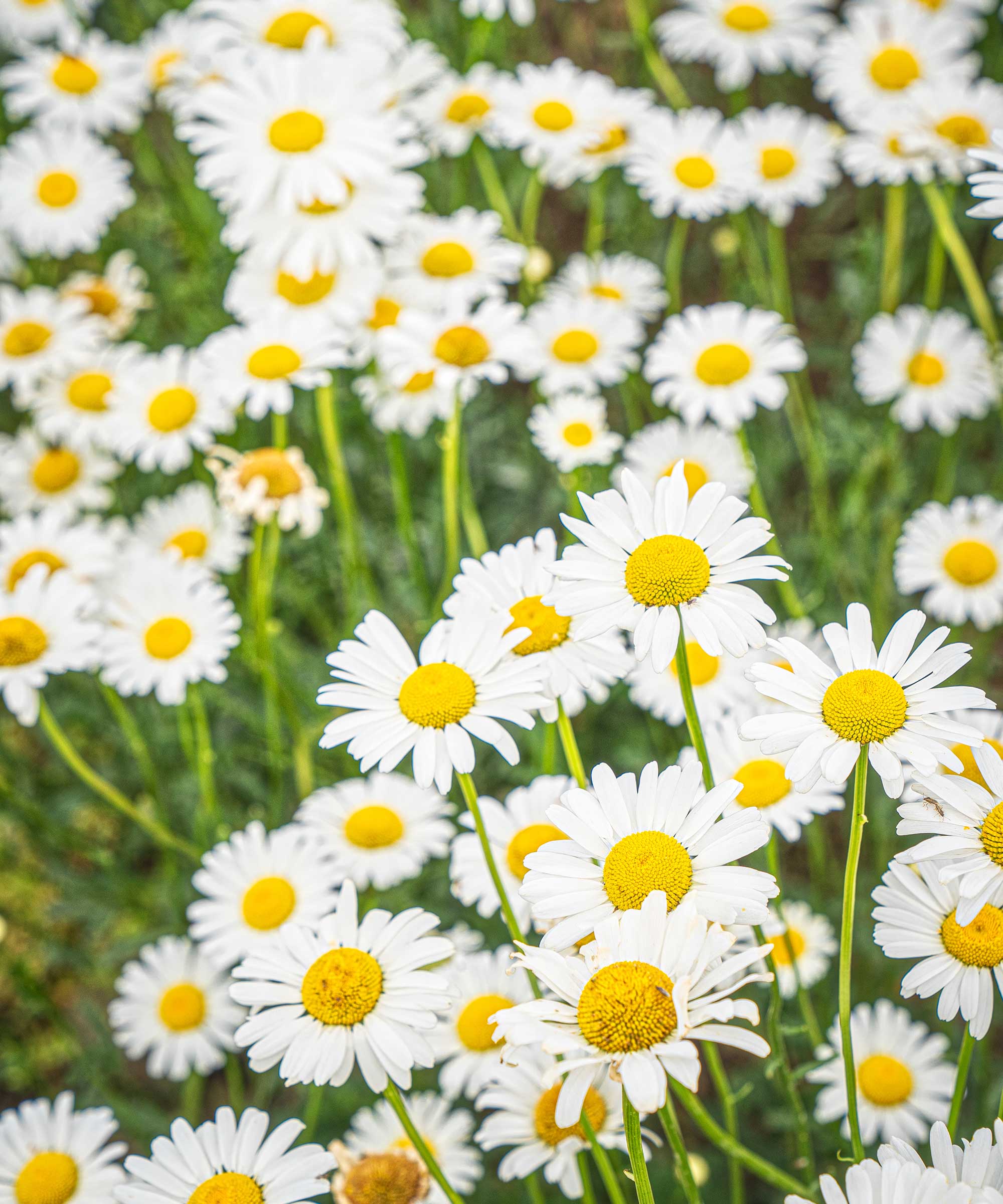
- Aspect: Full sun or part shade
- Suitable for: Borders, containers
- Flowering time: Spring and summer
Shasta daisies, or Leucanthemum, are hugely good value in borders because they take up a lot of space, filling large gaps in planting with their plethora of tiny yellow and white flower heads, often on tall stems reaching 3ft in height.
They will grow in a variety of soil conditions, and can tolerate some shade. It is best to plant them in early fall, no later than September, to give them sufficient time to establish before the cooler weather sets in. They are an ideal plant for hardiness zones 5-9. They will bloom best when given a healthy dose of organic matter and well draining soil. It's a good idea to keep deadheading Shasta daisies during the growing season to keep them blooming for as long as possible.
Shasta daisies are also lovely container plants, and if you have left it a little late to plant them in the ground this could be a good alternative. They require regular waterings and fertilizing to keep them happy in pots.
There are several beautiful Shasta daisy varieties, including 'silver princess', 'Alaska', and 'snow lady', which is available at Burpee.
10. Coreopsis
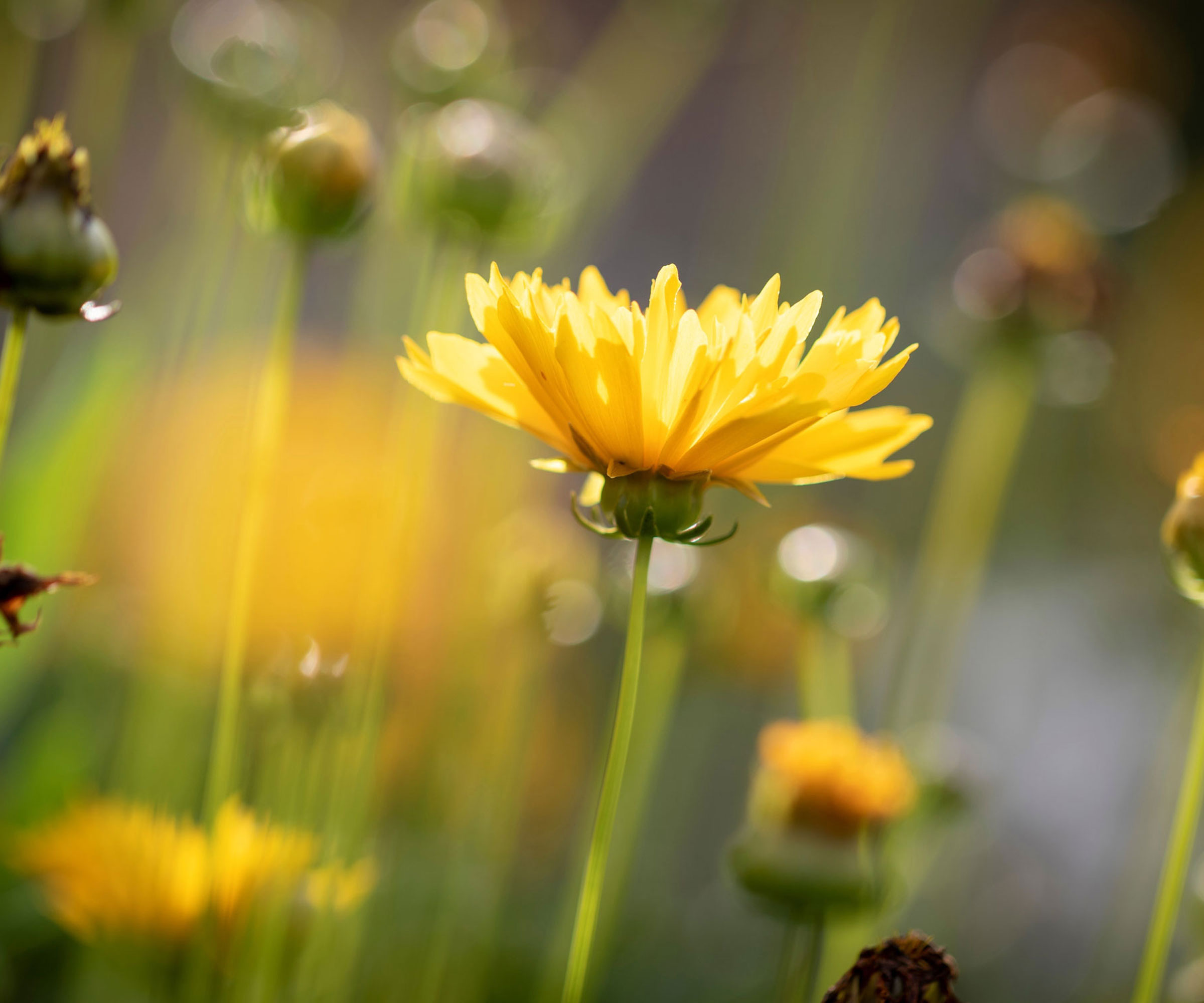
- Aspect: Full sun
- Suitable for: Borders, cut flowers
- Flowering time: Summer and fall
For hardy flowers that bloom well into the fall, Coreopsis or tickseed as it is also known, is a perfect choice. Not least because it will grow across a wide range of hardiness zones, from 2-8.
This native American flower comes in a spectrum of shades, from burgundy and pink, to yellow, rust and orange. Many are also bi-colored, and their tones bring warmth and vibrancy to the yard in late summer. Tickseed are also great for cutting and displaying indoors; their large daisy-like heads on thin, curvy stems will give lightness and movement to any cut flower arrangement.
Alternatively, you can leave the seed heads to provide some architectural interest to the garden in winter, not to mention food for your garden birds. These perennials spread underground from rhizomes, but they are also self seeding, so it's best to keep a check on them every few years to make sure they are not taking over and divide plants when necessary.
FAQs
What month is best to plant in fall?
September or October are the best fall months in which to plant perennials, vegetables, or many spring bulbs in the garden. At this time of year, the ground is still warm and anything you plant has lots of time to put out a good set of roots before the cold winter and frosts arrive.
There are many more perennials than the ones listed here that you can plant in September or in October in your backyard. As this time of year offers a fantastic opportunity to make additions to your garden, make sure to add planting perennials to your fall gardening checklist.

Drew has worked as a writer since 2008 and was also a professional gardener for many years. As a trained horticulturist, he worked in prestigious historic gardens, including Hanbury Hall and the world-famous Hidcote Manor Garden. He also spent time as a specialist kitchen gardener at Soho Farmhouse and Netherby Hall, where he grew vegetables, fruit, herbs, and cut flowers for restaurants. Drew has written for numerous print and online publications and is an allotment holder and garden blogger. He is shortlisted for the Digital Gardening Writer of the Year at the 2025 Garden Media Guild Awards.